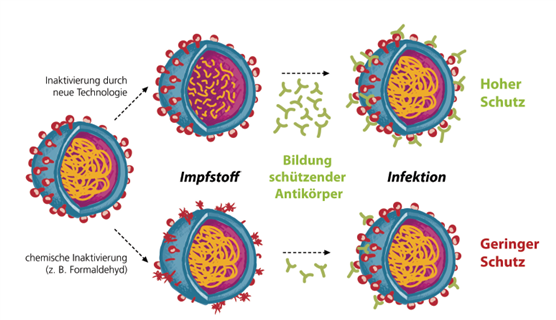By using vaccines, many infectious diseases can be successfully controlled in human and veterinary medicine. Despite enormous progress, there is still a great need for innovative technologies to develop vaccines that provide effective and long-lasting protection against infection, but without any risks for the vaccinated individual. This becomes clear in the production of dead vaccines: chemicals such as formaldehyde have been used for decades to inactivate viruses for use as vaccines. In human medicine, these vaccines are used, for example, against influenza, polio or hepatitis A. However, the use of formaldehyde leads to a chemical change in the pathogens, which results in a weakened effectiveness of the vaccine. This must be compensated by repeated booster vaccinations and effect enhancers (adjuvants). This results in enormous costs. Furthermore, the social acceptance of many vaccines is reduced by the fear of side effects.
Inactivation of viruses with electron beams
In the present project, a new method for the inactivation of pathogens is therefore being developed for the production of more effective vaccines while avoiding the use of chemicals. The pathogens will be inactivated by irradiation with low-energy electrons in order to preserve the protein antigens critical for successful vaccination. Preliminary tests on two different viruses have shown that they could be inactivated with electron beams. In the current project, the scientists identify the molecular basis of inactivation and specify the conditions required for inactivation of the most important pathogen classes while preserving the antigens. The Fraunhofer IGB uses immunological and molecular biological methods to investigate antigen preservation and the destruction of the pathogen genomes. The effectiveness of the inactivated viruses is then tested by vaccinating animals.
 Fraunhofer Institute for Interfacial Engineering and Biotechnology IGB
Fraunhofer Institute for Interfacial Engineering and Biotechnology IGB